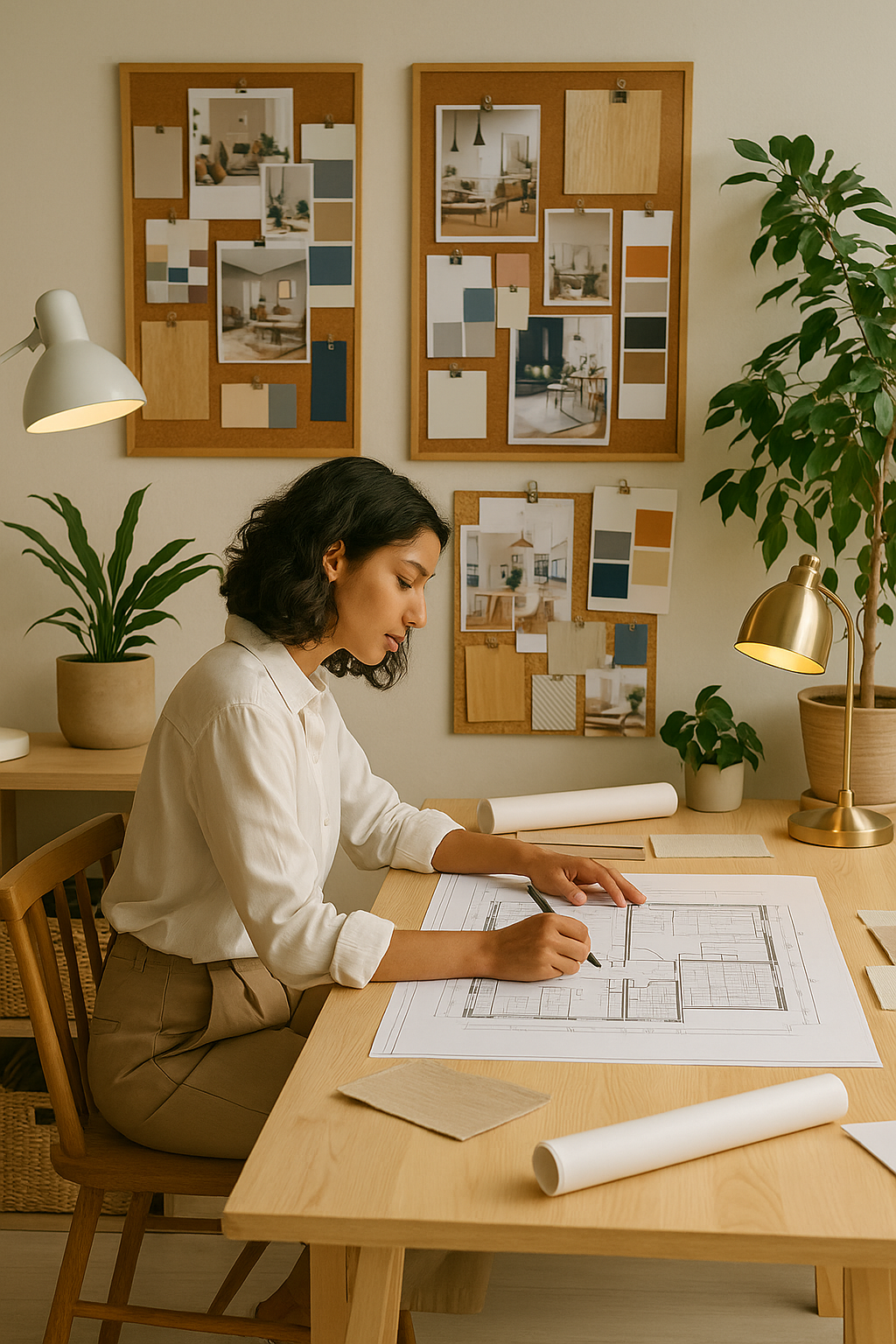Sketching is a subject that all students are asked to tackle during not only this interior design course, but it is also something you will certainly need to practice and develop in your professional life as an interior designer.
The ability to be able to produce a quick 'thumbnail' sketch is a very useful and important skill for any designer, as it is both a useful method of communicating your thoughts and ideas during a meeting, and if successful, can impress your client with your creativity and quick thinking. The best way to become familiar with this form of drawing is practice, practice and more practice!
You should practice sketching until you are able to develop a personal style that you can call your own, and one way to do this, is to select an everyday object in your home, say a chair or table, and draw it as quickly as you can. Don't measure it, or try to get clean straight lines, but instead, practice a loose, well observed even organic style to capture the essence of the object you wish to portray. Your first few attempts may be scrappy or untidy, but keep at it until you feel you have caught the look and feel of the object. Then try to add something to it, to 'redesign' it if you will, as this will help get you into creative mode, as you develop your thought process, and add or subtract from the drawing to achieve a desired result.
Sketching is an important part of the seminal creative process, as although CAD plays a huge part in presentation drawings, it is good to be able to work directly with pen and paper, and get those initial first thoughts down as soon as possible, and to be able to use your hands to explain an idea. This is also a good way of becoming familiar with interior construction, such as a door frame. For example look at a typical door in your own home, and see and understand how it hangs on the frame, and swings open through an arc of 90 degrees, then sketch it from a couple of different angles to catch the action.
Do the same with chairs, tables and windows in order to see, appreciate and capture the construction details on paper. This process is not only helpful in developing creativity, but helps to promote a greater understanding and awareness of the built environment around us. Sketching is also a useful way to become familiar with patterns and materials, joinery details and even the elevation of an entire building. The best designs often start as a series of scribbles and lines and paper, before they become the finely tuned line drawings we will eventually work with either as hand drawings, or with the use of CAD.
It's very easy to be able to take a photograph these days with a phone, and very useful too, as you may see an interesting interior, object or even a full building, and a quick shot is an excellent way to record this. However if you really want to get it into your head, get yourself a small sketchbook, say A5 sized, that will fit in a rucksack, and a couple of decent felt pens, and sit and sketch what you see in front of you. Sketching can be relaxing, but is also beneficial, and will help you to build a very personal collection of images you have noted either when abroad on holidays, or simply out for a walk. In fact we sometimes tend to ignore the interesting buildings and details we see on a daily basis as we move through our day.
As mentioned early on in this blog article, once you have developed your own 'style' of drawing, you will be able to produce sketches when meeting a client or even a contractor on site. It may be something as simple as sketching on an already finished drawing, or perhaps a more extemporaneous effort to convey your ideas in graphic format, either way it is worth keeping up to speed, and always carrying a few pens with you for such an occasion and if you can trot out a sketch to a client, it's a very satisfying feeling!
To go with your sketch pad, I would suggest using felt pens instead of pencils, as they give a more consistent line, and the result will be much clearer. Don't use a biro if possible, as this never quite looks as good. Felt tip pens now come in a variety of nib sizes, much like technical drawing pens, and can range from very fine lines at 0.8mm through to medium of 0.3mm and up to 0.7mm for a heavier line weight. Staedtler provide a very good set of Pigment liner pens in a convenient single pack.
Practice just drawing lines of varying thickness, straight lines, curves, circles and swirls, loosen up and just draw, as it is said that all children can draw, but that we lose the ability as we grow older due to being self conscious, so do away with that, and release your inner artist!
Sketching is fun but it is also a very practical way of getting used to perspective as well as scale and proportion, as you need to think about what you are drawing. Sketching also helps to develop perception, and field of depth.
Remember, that being able to draw well alone will not make you a good designer, but the ability to produce good sketches will greatly enhance your chances of getting ahead.

